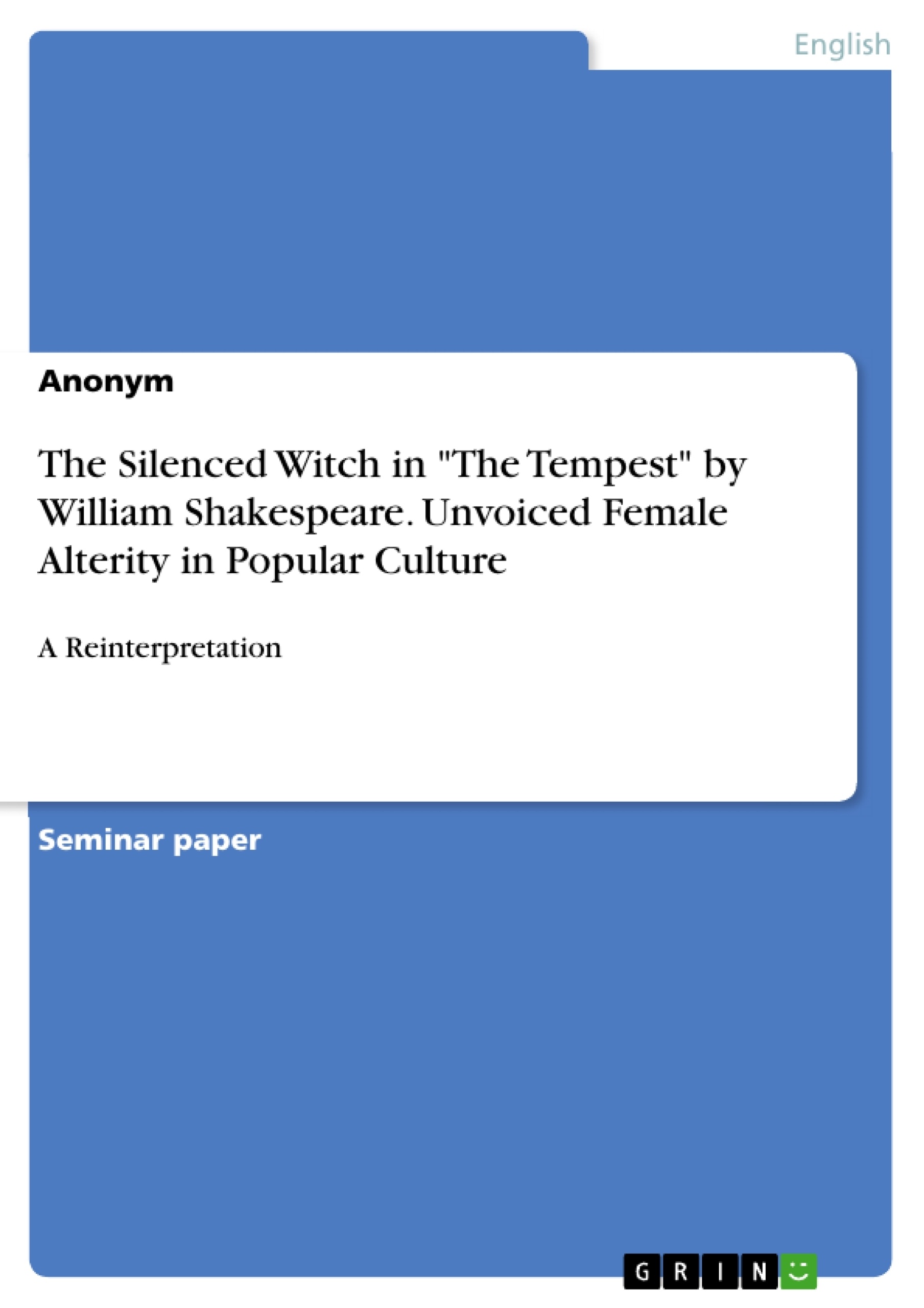The paper is about the silenced Witch in Shakespeare’s "The Tempest" and reinterpretates the unvoiced female alterlity in popular culture. The thesis is that the witch Sycorax transcends gender boundaries by baring similarities to the male character in the play and therefore showing that men and women are equal or can potentially be equal if certain immutable traits like race and gender are not seen hierarchically in terms of power and superiority. Taymor, by claiming to perform a feminist approach, merely omits presenting Sycorax at all: She selects passages dealing with Sycorax from the original and evades them visually and audibly in her film, trying to moderate Sycorax’s appearance, but actually erasing her completely out of discourse, which, by implication, is not unquestionably feminist.
Table of Contents
- Introductory Statement
- Sycorax: Race, Gender and Female Alterity
- Sycorax in the Play
- Sycorax’s Discourse
- Julie Taymor’s The Tempest: The Witch in Film
- Sycorax on Screen
- Sycorax’s Discourse
- Conclusion
Objectives and Key Themes
This essay aims to analyse the representation of Sycorax in both Shakespeare’s original The Tempest and Julie Taymor’s 2010 film adaption. The analysis seeks to understand how the unvoiced female alterity is portrayed in both versions and how these interpretations differ, particularly in relation to the themes of colonialism, patriarchy, and gender. The essay focuses on Sycorax as a marginalized figure and explores how her absence from the play and film serves to reinforce or challenge existing power structures.
- The representation of female alterity in Shakespeare's The Tempest
- The construction of Sycorax as a “foil” for Prospero
- The impact of Julie Taymor’s gender switch on the portrayal of Sycorax
- The role of colonialism and patriarchy in shaping the representation of Sycorax
- The implications of Sycorax’s silence and absence from the film.
Chapter Summaries
The first chapter focuses on analyzing Sycorax’s representation in Shakespeare's The Tempest, specifically examining her portrayal through the lens of race, gender, and female alterity. The chapter explores how Prospero’s characterization of Sycorax, despite her physical absence, serves to reinforce his patriarchal and colonial power structure.
The second chapter delves into Julie Taymor’s film adaptation of The Tempest, examining how Taymor’s transformation of Prospero into Prospera impacts the portrayal of Sycorax. The chapter analyzes the cinematic realization of Sycorax and the implications of her virtual absence in the film.
Keywords
This essay explores the themes of female alterity, colonial discourse, patriarchal power structures, and cinematic adaptation in relation to the representation of Sycorax in Shakespeare's The Tempest and Julie Taymor’s film adaptation. Key concepts include 'othering', misogyny, marginalization, and the use of silence and absence as tools of power.
- Quote paper
- Anonym (Author), 2019, The Silenced Witch in "The Tempest" by William Shakespeare. Unvoiced Female Alterity in Popular Culture, Munich, GRIN Verlag, https://www.grin.com/document/940999




